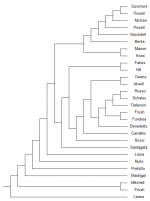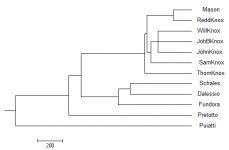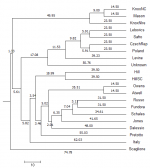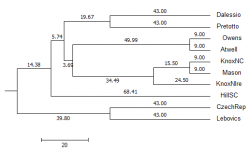Sile
Banned
- Messages
- 5,110
- Reaction score
- 582
- Points
- 0
- Location
- Australia
- Ethnic group
- North Alpine Italian
- Y-DNA haplogroup
- T1a2 -Z19945..Jura
- mtDNA haplogroup
- H95a1 ..Pannoni
I will look forward to it
Pingerelli is 67 marker tested
and hof is 37 marker tested..........below is his ysearch ID
FQX7R
he is DYS390=22
this family must have tested another member , this is the other ysearch ID
Z9PTC
Pingerelli is 67 marker tested
and hof is 37 marker tested..........below is his ysearch ID
FQX7R
he is DYS390=22
this family must have tested another member , this is the other ysearch ID
Z9PTC





